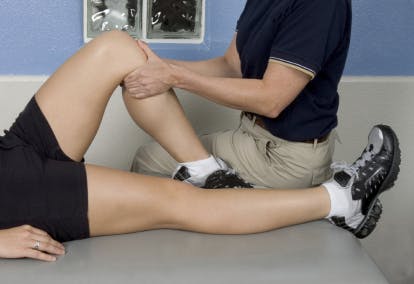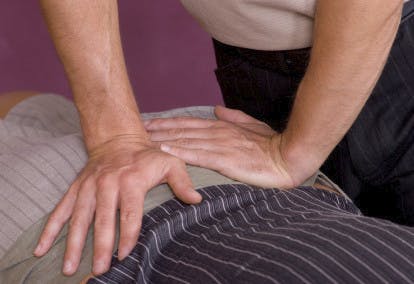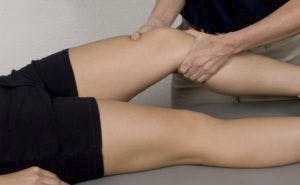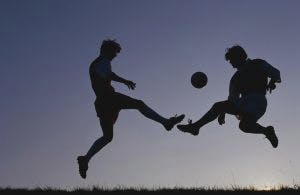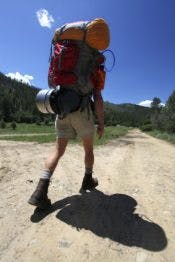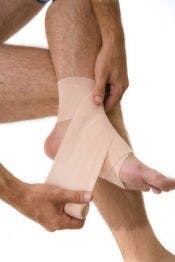Leg/Buttock Pain and Tingling
Leg/buttock pain along with tingling and/or numbness may result from injury or other biomechanical issues at one or several other locations. For instance, compression of a nerve root between the lumbar vertebrae or from encroachment of an intervertebral disc onto the nerve may cause radiating pain down the back of the leg and into the foot. Likewise, compression of the sciatic nerve (the large nerve that travels down the back of the leg) may get compressed as it passes through the piriformis muscle – located at the buttocks region (Piriformis Syndrome), while compression of the sciatic nerve may also occur at numerous other regions causing similar radiating pain down the leg (Sciatica). Regardless of the name the source of symptoms is typically due to compression of the nerve at some location along its path. The team at Generations will take you through a detailed assessment to determine the source of the compression, while educating each individual on compromising positions/activities specific to each individual case. Treatment will involve progressive hands-on techniques to relieve the source of compression, while implementing modalities such as acupuncture, electrotherapy laser and in some cases mechanical traction, to reduce pain.
Patellofemoral Pain
A sprain to one or numerous ligaments around the knee such as the MCL, ACL, LCL or PCL are some of the most common injuries referred to Generations Sport & Spine. Knee sprains result from a sudden twist or combination of a stop and twist motion. Pain may be felt on either side of the knee and may also be combined with a feeling of a lack of stability and fearfulness to weight bear on the involved side. Treatment includes manual techniques to improve soft tissue extensibility, joint mechanics and normalized mobility of the involved lower extremity. Modalities such as acupuncture, electrotherapy and laser are frequently used to reduce pain and inflammation. Furthermore, exercises focusing on restoring strength and mobility are utilized while addressing resulting biomechanical issues.


Knee Sprains
A sprain to one or numerous ligaments around the knee such as the MCL, ACL, LCL or PCL are some of the most common injuries referred to Generations Sport & Spine. Knee sprains result from a sudden twist or combination of a stop and twist motion. Pain may be felt on either side of the knee and may also be combined with a feeling of a lack of stability and fearfulness to weight bear on the involved side. Treatment includes manual techniques to improve soft tissue extensibility, joint mechanics and normalized mobility of the involved lower extremity. Modalities such as acupuncture, electrotherapy and laser are frequently used to reduce pain and inflammation. Furthermore, exercises focusing on restoring strength and mobility are utilized while addressing resulting biomechanical issues.
Ankle Sprains
Ankle Sprains are also one of the most common orthopedic injuries sustained within the general population. Most common is the lateral ankle sprain, which involves a quick uncontrolled rolling motion onto the outside of the foot. Symptoms include moderate to severe swelling, pain on the outside of the foot, due to a stretching or tearing of the ligaments, while pain on the inside of the foot is also common, due to a compression of the bones of the foot up against the inside ankle bone. The first goal of treatment is to reduce swelling, while later concentrating on resulting strength, balance or biomechanical issues. Reoccurrence of ankle sprains is high; therefore the Generations staff will work closely with each individual to ensure that they can return to their previous level of activities without fear of re-injury.

Plantar Fasciitis
Plantar Fasciitis is a repetitive strain injury to the thick connective tissue that spans the bottom of the foot. Typical symptoms include pain located around the heel, when weight bearing causing a noticeable limp. Treatment includes aggressive soft tissue methods, such as Graston Technique and deep friction massage to break up thickened scar tissue allowing for better pliability of the fascia; ankle joint mobilizations and the correction of biomechanical issues that may cause more pressure and overuse to the fascia. Modalities such as electrotherapy, laser and acupuncture may also be used to decrease pain, while specific taping methods may be utilized to help off-load the overworked fascia.


